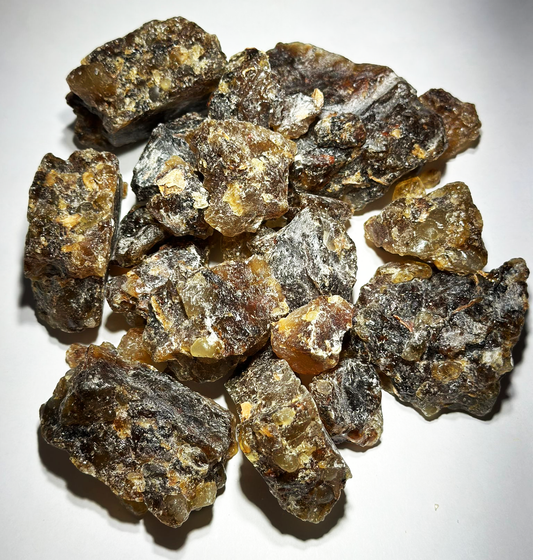Introduction
In the realm of fragrances, oud, also known as agarwood, stands as a symbol of luxury, sophistication, and allure. This precious and rare natural substance is derived from the heartwood of the Aquilaria tree, native to Southeast Asia. It has been used for centuries in traditional medicine, religious ceremonies, and, most famously, as an exquisite perfume. The oud trade is a thriving business, with various grades and qualities to cater to different markets. In this blog, we will explore the unique and captivating world of Artisanal Oud and how it distinguishes itself from other oud products available in the market.
Artisanal Oud, a fragrant and precious natural resource, has a rich history that stretches back centuries. Highly prized for its captivating scent, oud is derived from the dark, resinous heartwood of the Aquilaria tree. When infected by a particular type of mold, the tree produces a unique fragrance that has been cherished by cultures around the world. This article delves into the historical roots of artisanal oud, tracing its journey from ancient civilisations to modern-day perfumery.
Origins of Oud
The earliest recorded use of oud dates back to the third millennium BCE, with ancient civilizations in the Indus Valley and Mesopotamia (present-day Iraq and Pakistan) utilizing the resin in religious rituals and ceremonies.
The Spread of Oud
Oud quickly gained popularity across the Middle East, South Asia, and Southeast Asia. Arabian traders introduced it to the Islamic world during the 7th century, and it became an essential part of religious and cultural practices. Oud was also used in traditional Chinese medicine for its therapeutic properties, while in Japan, it became an integral part of the kodo incense ceremony.
Artisanal Production Techniques
Artisans developed a range of techniques to produce high-quality oud oil, which involved the careful harvesting and processing of infected Aquilaria trees. Traditional methods included the "hydro-distillation" process, which involved soaking the wood chips in water and then heating them to release the aromatic oils. Another popular method was "steam distillation," where steam was passed through the wood chips to extract the precious oud oil.
Modern Artisanal Oud Production
In recent years, there has been a resurgence of interest in artisanal oud, with many niche perfume houses and independent artisans focusing on producing small-batch, high-quality oud oils. Sustainable farming practices have been introduced to protect the endangered Aquilaria trees and ensure their long-term survival. Today, countries like India, Cambodia, Thailand, and Malaysia are leading producers of artisanal oud.
The Making of Artisanal Oud
The term 'artisanal' signifies the use of traditional, hands-on methods and expertise in the production process. Artisanal Oud is crafted with utmost care, employing time-honored techniques passed down through generations. This meticulous process starts with the selection of high-quality Aquilaria trees that have developed the rich, resinous heartwood needed to produce oud. The age of the tree, the origin of the infection, and the environmental conditions all play a significant role in determining the final scent profile of the artisanal oud.
Once the ideal trees are identified, the heartwood is carefully extracted and ground into a powder. The traditional method of distillation, called hydro-distillation, is then used to extract the precious oud oil. This process can take weeks to complete, with skilled artisans monitoring and controlling the temperature and other variables to ensure the highest quality oil is obtained. The result is a highly concentrated, luxurious oil with a unique scent profile that varies depending on the type of Aquilaria tree and the conditions in which it was grown.
The Artisanal Oud Difference
Artisanal oud distinguishes itself from other oud products in various ways:
- Quality and Purity: Artisanal Oud oil is known for its unmatched purity, with no additives or synthetic elements. The painstaking process of extraction ensures that the final product is unadulterated and of the highest quality.
- Rarity and Exclusivity: The Artisanal Oud trade is characterized by small-batch production, as only a limited number of high-quality Aquilaria trees meet the criteria for Artisanal Oud. This exclusivity and scarcity add to the allure and demand for artisanal oud products.
- Unique Scent Profile: The scent of Artisanal Oud is unparalleled, with a rich, complex, and multifaceted aroma that evolves over time. It can take on notes of sweet, woody, smoky, earthy, or even fruity and floral, depending on the specific tree and its environment.
- Sustainability: As Artisanal Oud is produced in small quantities, the trade often focuses on sustainable sourcing practices, ensuring that the Aquilaria tree population is conserved and protected.
- Heritage and Craftsmanship: The production of Artisanal Oud is steeped in tradition, with skilled artisans devoting years to perfecting their techniques. This craftsmanship and dedication to the art are evident in the quality and uniqueness of the final product.
Artisanal Oud in Contemporary Culture
The allure of Artisanal Oud has not gone unnoticed in the world of contemporary culture. Many high-end perfumers have incorporated artisanal oud into their creations, celebrating its unique and captivating scent. These luxurious fragrances often combine artisanal oud with other rare and exotic ingredients, creating a sensory experience that is truly unparalleled.
Challenges and the Future of Artisanal Oud
The Artisanal Oud industry faces several challenges, including deforestation, over-harvesting, and the need to comply with international regulations. To address these issues, efforts have been made to cultivate Aquilaria trees in controlled environments and implement fair trade practices. The future of Artisanal Oud depends on the ability to maintain a balance between demand, sustainable production, and the conservation of these precious trees.







